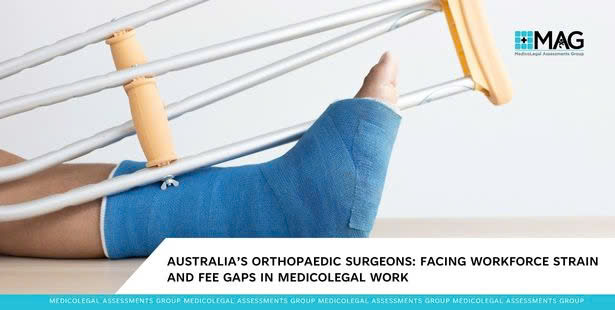The Critical Role of Orthopaedic Surgeons
Orthopaedic surgeons play a pivotal role in Australia’s medicolegal landscape. Beyond managing musculoskeletal injuries, they are frequently engaged to provide independent medical examinations (IMEs), expert witness reports, and impairment assessments that shape settlement values, return-to-work decisions, and long-term care planning. Their opinions must address not only the clinical facts of an injury but also legal considerations such as causation, impairment, treatment necessity, and future risks. Given the complexity of spinal injuries, fractures, and degenerative conditions, orthopaedic expertise is often central to contested claims.
An Ageing and Uneven Workforce
Orthopaedic surgery remains a highly specialised yet unevenly distributed workforce. According to Jobs and Skills Australia (May 2025), there are around 1,500 practising orthopaedic surgeons nationwide. Female representation is just 10 per cent, and more than one in ten are aged over 65. Concerns have been raised that retirements may outpace the entry of new trainees over the next decade—particularly in jurisdictions already facing service shortages.
A Patchwork of Fees Across States
While demand for medicolegal orthopaedic expertise remains strong, fees vary considerably across jurisdictions. In Victoria, WorkSafe schedules currently allow $1,882 for an IME and report, rising to $2,300 for complex cases. By contrast, the New South Wales State Insurance Regulatory Authority (SIRA) lists $371 for an initial consultation and report, and $255 for subsequent consultations. These disparities have prompted concern within the profession. Organisations such as the Australian Academy of Medicolegal Professionals argue that regulated fees often fail to reflect the time, expertise, and administrative burden required to produce high-quality reports. This disincentivises participation, reduces the pool of available assessors, and contributes to longer delays for claimants and the courts.
Looking Ahead
Australia’s medicolegal system relies heavily on orthopaedic surgeons to provide timely, independent assessments. Yet with an ageing workforce, uneven geographic distribution, and fee schedules that undervalue their contribution, there is a growing risk of bottlenecks. Addressing these challenges will require a multi-pronged response: expanding training numbers, ensuring fair remuneration, and improving access for rural and regional communities. Without such measures, both patients and the justice system are likely to experience increased strain.

